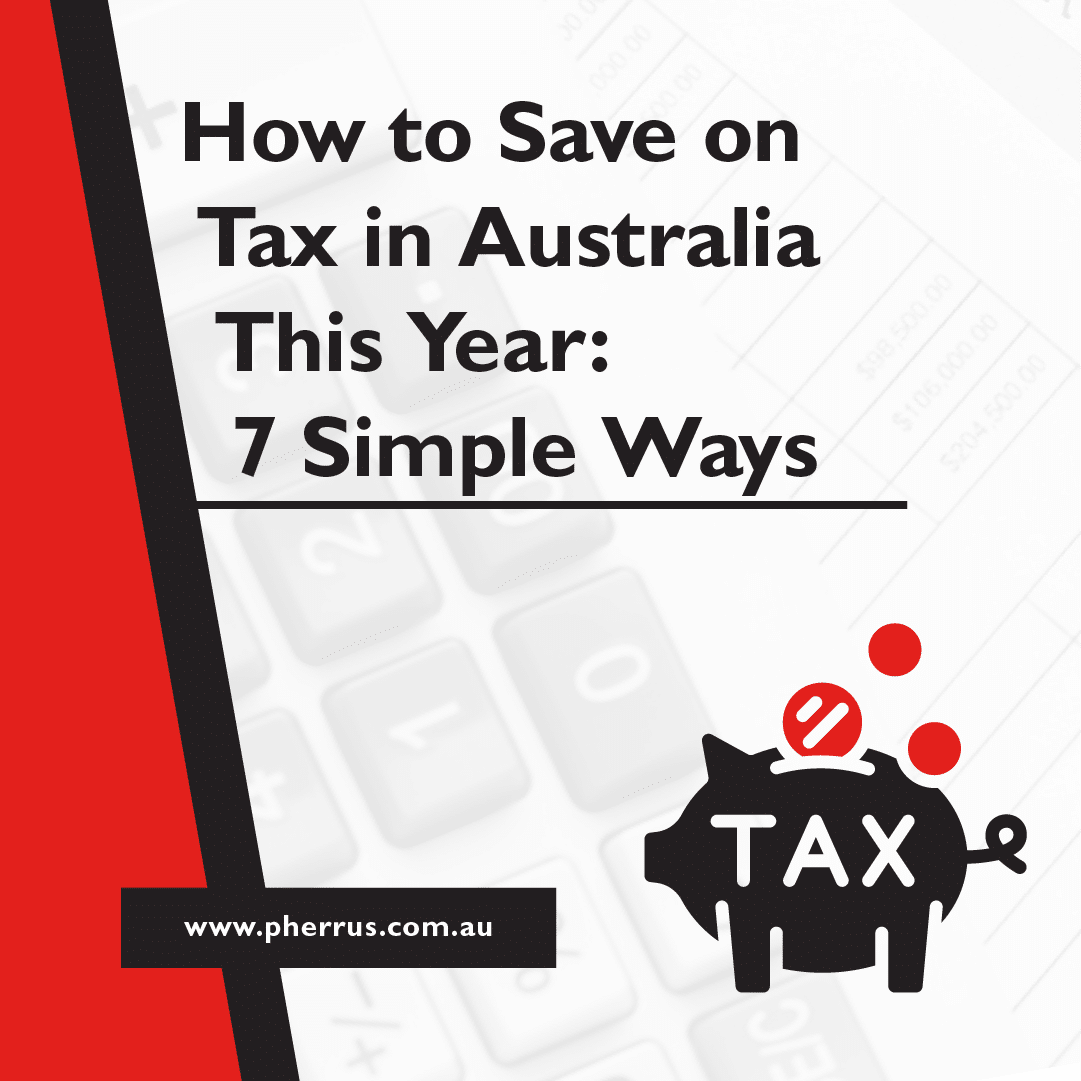Tax season is upon us! Are there legitimate ways you can save money on your tax bill this year?
There could be! Smart tax planning isn’t about finding loopholes; it’s about knowing how to make the most of the ATO rules that apply to you.
If you want to know how to save on tax in Australia, stick around for our simple strategies that could put more cash back in your pocket.
Just please remember, this is general taxation advice.
It’s best to chat with tax professionals like Pherrus to have your unique tax situation handled correctly.
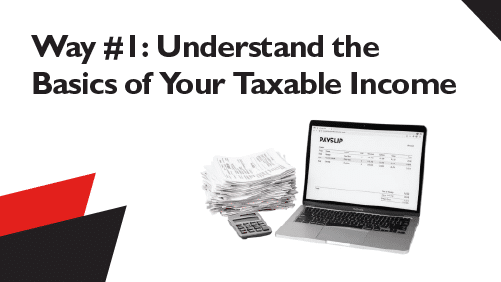
Way #1: Understand the Basics of Your Taxable Income
The first step to saving on your tax return is understanding how your taxable income is calculated.
Taxable Income = Assessable Income – Allowable Deductions.
Assessable income is the total money you earn: your salary, wages, and other income.
Allowable deductions are the costs you incur while earning that money, like work-related expenses or certain personal deductions.
The following ways to save on taxes revolve around either increasing your deductions or strategically managing your income.

Way #2: Claim Every Work-Related Deduction You Can (for Employees)
As a PAYG employee, one of the easiest ways to save on your tax return is by claiming every work-related deduction you can. But before you do, remember the three golden rules:
- The expense must be something you actually paid for.
- The expense must be directly connected to earning your income.
- You must be able to prove your claim with receipts or records.
Common things you can claim on tax as an employee include
- Working From Home (WFH) Expenses: You can claim a percentage of your household running costs if you work from home, such as electricity, internet, and phone bills. The ATO offers two methods to determine the percentage: the fixed rate method (based on hours worked from home) or the actual cost method (for a more detailed breakdown of costs).
- Car and Travel Expenses: You can claim costs for using your vehicle for work purposes, like business trips or client meetings, but not for your daily commute. The ATO allows different methods to calculate this, including the cents per kilometre method or the logbook method.
- Uniforms, Tools, and Equipment: If your job requires specific uniforms or equipment, these are often deductible. For example, the cost of protective gear, tools, or other items you use on the job, such as a laptop.
- Self-Education Expenses: If you’re studying to improve skills directly related to your current job, you can claim expenses like course fees, textbooks, and travel for study purposes.
- Other Common Claims: Don’t forget about union fees, professional subscriptions, and some office supplies or phone costs if used for work.
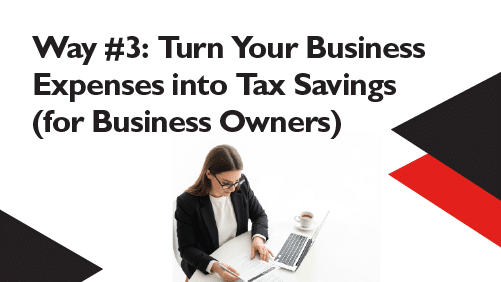
Way #3: Turn Your Business Expenses into Tax Savings (for Business Owners)
If you’re a sole trader, contractor, or small business owner, you can claim a broad range of expenses related to operating your business.
- Asset Write-Offs: When you buy assets for your business, such as equipment, vehicles, or technology, the cost can be depreciated over time. However, there are instant asset write-off schemes that allow you to claim the full cost of eligible assets in the year they’re purchased. Check the ATO rules for 2024-25 to see which assets qualify and the current thresholds.
- Home-Based Business Costs: If you run your business from home, you can claim a portion of your household running costs, such as electricity, phone, and internet bills.
- Operating Expenses: You can also claim regular business expenses like insurance, materials, supplies, marketing costs, and professional development costs.

Way #4: Use Your Superannuation to Lower Your Tax Bill
By contributing to your super, you can lower your taxable income and save on taxes.
If your employer offers salary sacrificing, you can arrange to have part of your pre-tax salary paid directly into your super.
Doing this reduces your taxable income, which means you pay less income tax.
As an individual, you can also make personal contributions to your super and claim a tax deduction.
You’ll lower your taxable income, and the contribution will be taxed at a concessional rate of just 15% in the super fund, which could be significantly lower than your regular income tax rate.
However, there are annual caps on how much you can contribute: $30,000 for concessional contributions (pre-tax contributions like employer contributions, salary sacrifice, or tax-deductible personal contributions) and $120,000 for non-concessional contributions (after-tax contributions like personal savings) or 3 times this cap with the ‘Bring-forward arrangement’.
Keep these limits in mind to avoid excess contribution charges.
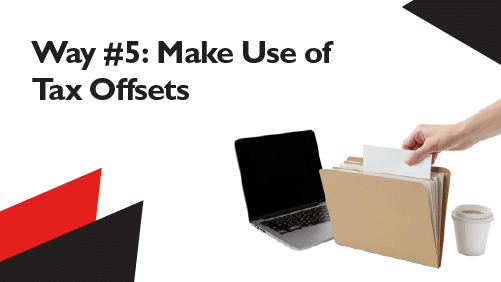
Way #5: Make Use of Tax Offsets
Tax offsets directly reduce the amount of tax owed, making them a valuable tool for both individuals and business owners.
For Individuals
- Low Income Tax Offset: If your taxable income is up to $66,667, you may qualify for this offset, which can reduce your tax payable by up to $700. The exact amount depends on your income level.
- Seniors and Pensioners Tax Offset: Available to eligible seniors and pensioners, depending on age, income, and residency status.
- Private Health Insurance Rebate: If you have private health insurance, you might be eligible for a rebate, which can lower your tax bill. The amount varies based on income and age.
- Foreign Income Tax Offset: If you’ve paid foreign tax on income earned overseas, you may be entitled to a tax offset to avoid double taxation.
For Business Owners
- Small Business Income Tax Offset: If you’re a sole trader or earn income from a small business trust or partnership with an aggregated turnover under $5 million, you may be eligible for this offset. It can reduce your tax by up to $1,000 annually.
- Loss Carry-Back Tax Offset: Eligible corporate entities can claim a refundable tax offset for losses incurred in the 2019–20 to 2022–23 income years, potentially resulting in a tax refund.
- Research and Development (R&D) Tax Incentive: Businesses investing in eligible R&D activities for income years commencing on or after July 1, 2021, may qualify for this offset, which can reduce tax payable or provide a cash refund.
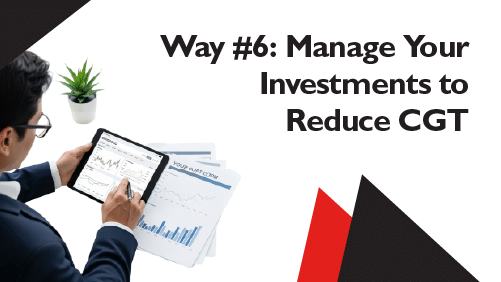
Way #6: Manage Your Investments to Reduce CGT
If you have an investment property or shares, managing your Capital Gains Tax (CGT) is a crucial strategy to keep more of your profit.
The most important rule to remember is the 50% CGT Discount.
If you hold an asset for more than 12 months, you typically only pay tax on half the profit when you sell it.
Another tax-saving strategy is to use capital losses to offset capital gains.
If you’ve made a loss on one asset, you can subtract that from your gains on another to reduce your overall tax liability.

Way #7: Plan Ahead for Even More Savings Next Year
Year-round tax planning is a habit that pays off.
By thinking ahead, you can take simple steps now to maximise your savings next tax season.
- Prepaying Expenses: If you have deductible expenses, like insurance or subscriptions, consider paying them before June 30. By prepaying, you can bring the deduction into the current tax year, reducing your taxable income.
- Timing Asset Sales: To reduce the CGT you owe, consider timing asset sales for a year when your income is lower, as this can lower your overall tax liability.

The Simplest Way of All: Get Expert Help from Pherrus
While these strategies are simple to understand, applying them all correctly and in compliance with the ATO’s rules can be difficult.
The simplest way to maximise your tax savings and stay on the right side of the ATO is to have an expert in your corner.
At Pherrus Financial Services, we know how to save on tax in Australia. We can
- Identify all the deductions you’re entitled to.
- Help you implement year-round tax planning strategies.
- Handle all complex tax calculations and tax return lodgement requirements for you.
Contact the expert team at Pherrus today for a consultation. Fill out our online form or call (02) 9099 9109.

FAQ
What Lowers Your Taxes the Most?
Making concessional (pre-tax) superannuation contributions, such as salary sacrificing, reduces your taxable income.
Additionally, claiming all eligible work-related expenses, including those for working from home, can further lower your tax liability, provided they meet ATO criteria.
Lastly, utilising tax offsets like the Low Income Tax Offset or Small Business Income Tax Offset can directly reduce the amount of tax you owe.
What Deductions Can I Claim Without Receipts?
You can claim
- Up to $300 of work-related expenses without receipts, but you must show how you calculated the expenses and how they relate to your job.
- Up to $150 in laundry expenses without receipts, but you must show how you determined the amount.
- Donations of up to $10 without receipts.
What Gifts Can You Claim on Tax?
You can claim
- Monetary donations of $2 or more to registered Deductible Gift Recipients (DGRs).
- Property or shares donated to a DGR.
- Small cash donations of $2 or more to bucket collections for disaster relief.
- Political contributions to registered political parties or candidates.
Personal gifts, crowdfunding donations (unless DGR), and donations with benefits (like raffle tickets) are not deductible.


